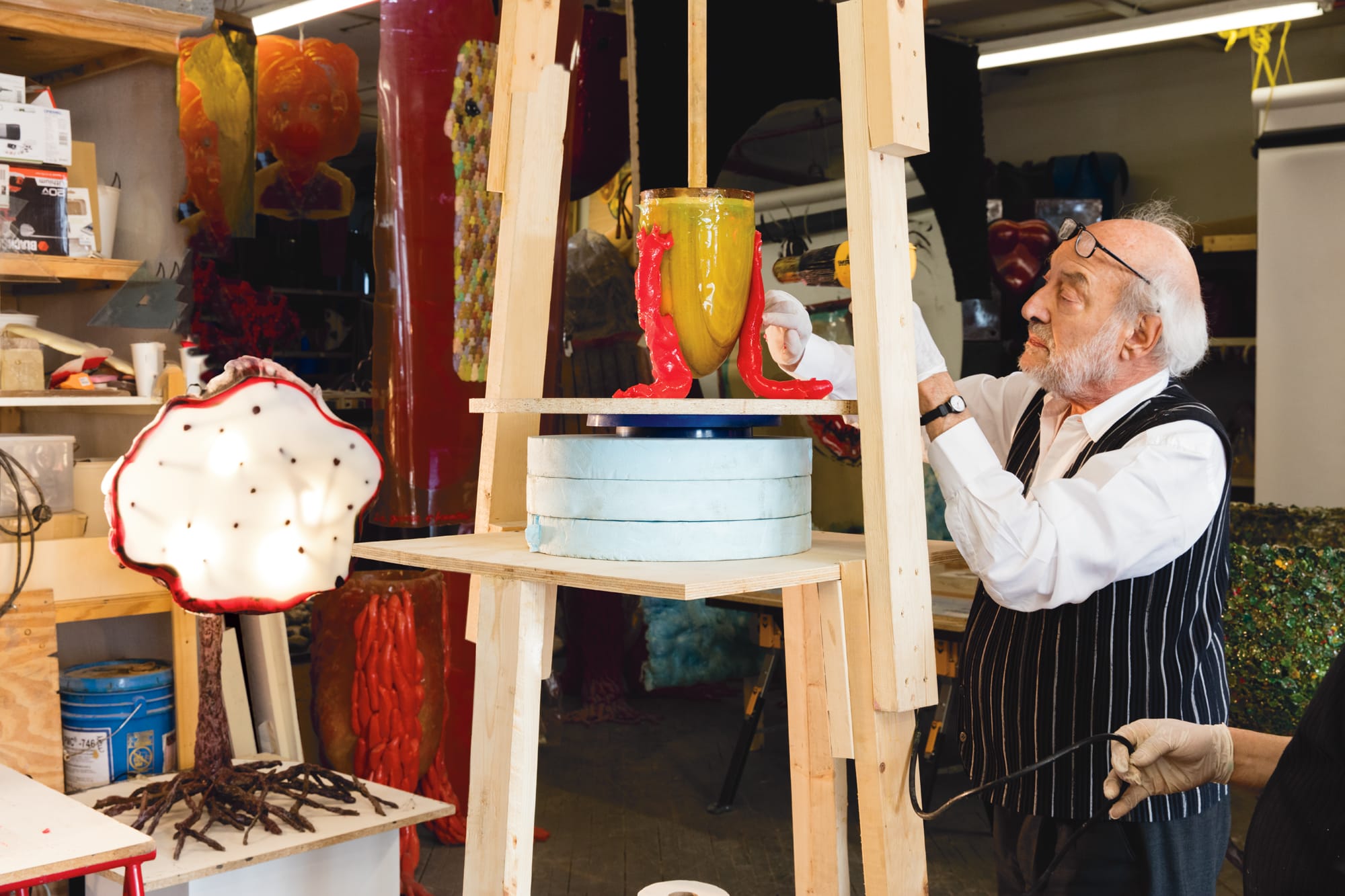How Designer Gaetano Pesce Makes His Fantastical Creations
The Italian master is known for his use of viscous materials, notably resin, silicone, and polyurethane, which congeal in molds to form pieces of sculpture and furniture


On September 3, 2016, “Molds (Gelati Misti)”(“ Mixed Ice Creams”), a solo exhibition of and present work by the seminal Italian, New York–based multidisciplinary artist, designer, and architect Gaetano Pesce, opened at MOCA, the Museum of Contemporary Art at the Pacific Design Center in Los Angeles.
In addition to showing some of Pesce’s most famous works, as well as unveiling some new ones, the exhibition displayed the molds that gave shape to these pieces, highlighting Pesce’s unique fabrication process, one that is considered as important to his body of work as the objects themselves.
Pesce is known for his use of viscous materials, notably resin, silicone, and polyurethane, which congeal in molds to form pieces of sculpture and furniture. His choice of materials reflects his philosophy on life, and the importance of one’s ability to adapt in an ever-changing society. “Fluid, flexible, elastic—design should mirror how people need to behave in our time,” he explained.

Wanting to dispense with traditional methods of production, which came with inherent creative limitations, Pesce introduced the element of chance to the fabrication process, giving freedom to the materials and embracing imperfections. By mixing colors and varying quantities within the constraints of the molds, he was able to create unique objects in large quantities, overcoming the tedium of mass production and bridging the gap between art and design.
“It’s like domesticating the uncertain,” he said. By disrupting an otherwise impersonal manufacturing process, Pesce restores the primacy of the human over the machine. The designer’s aversion to repetition and standardization is no more apparent than in his studio near New York’s Brooklyn Navy Yard, where all preconceived notions about industrial design are checked at the door.

Fantastical architectural miniatures are juxtaposed with oversize chairs, shelving lined with colorfully translucent resin vases, and large, vibrant skins. Pesce’s flexible works, some of which are strung, curtain-like, from the ceiling, and his 1972 Golgotha table, as well as his 1969 UP7 ‘Il Piede,’ make the experience all the more surreal.
Pesce is far more restrained than the work he’s known for. Even in his studio, which can be quite chaotic, he maintains a kind of contagious tranquility. His employees work swiftly and quietly, juggling tasks from pouring molds to model making. Since his beginnings over five decades ago, Pesce continues to create work that is wholly original and uniquely his own. His molds, never before displayed in a show, will take center stage—offering a rare glimpse into the ingenious creative process behind his powerful fusion of art and design.
A version of this article first appeared in print in our 2016 Fall issue under the headline “Pesce in Progress.” Subscribe to the magazine.